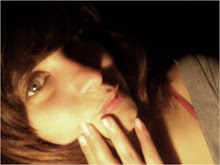
- Bipolar I Disorder : This is the most severe form of the disorder. It includes at least one manic or mixed episode and at least one depressive episode
- Bipolar II Disorder: Patients have had at least one depressive episode and at least one hypomanic episode. A patient could experience periods of normal mooods as well.
- Bipolar disorder not otherwise specified (NOS): This classification is used for cases in which bipolar patients experience patterns that don't fall into the I or II categories.
- Cyclothymia: This is the least severe form of the disorder. It includes two years of episodes of hypomania and milder depression.
Meaningless: lacking any significance.
Illness: an unhealthy condition of body or mind.
Mood: a conscious state of mind or predominant emotion.
Risky: attended with risk or danger.
Despair: to lose all hope or confidence.
Sluggishness: averse to activity or exertion.
Restlessness: characterized by or manifesting unrest especially of mind.
Pains: localized physical suffering associated with bodily disorder .
Delusions: a persistent false psychotic belief regarding the self or persons or objects outside the self that is maintained despite indisputable evidence to the contrary.
Hallucinations: perception of objects with no reality usually arising from disorder of the nervous system or in response to drugs.
Environmental: the circumstances, objects, or conditions by which one is surrounded.
Hypomania: a mild mania especially when part of bipolar disorder .
Anticonvulsant: used or tending to control or to prevent convulsions.
Cyclothymia: relating to or being a mood disorder characterized by alternating episodes of depression and elation in a form less severe than that of bipolar disorder .
Pumped: filled with energetic excitement and enthusiasm .
Article: http://health.howstuffworks.com/bipolar-disorder.htm

